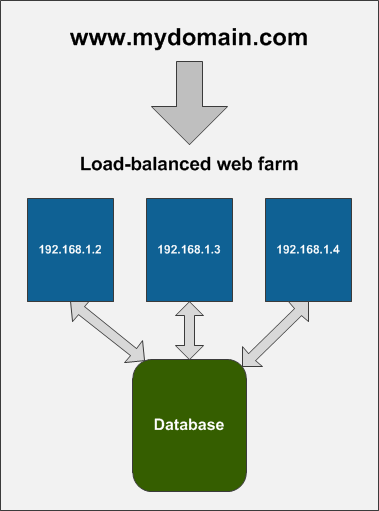Setting up web farms
Web farms distribute computing among multiple web servers that all provide the same content. Each server increases the number of requests that the web farm can serve, which allows you to scale the performance of the website. You can also use web farms to achieve high availability – if one of the servers in the web farm stops working, the other servers continue to run the site.Native web farm support in Kentico provides the following features:
- Synchronization of cache and content from a database to all web farm servers.
- Synchronization of changes made to the site settings on one of the servers to all other servers.
- Synchronization of files uploaded to the site between all servers. This is used only if you store uploaded files on the disk or on both disk and in the database.
The following image shows the structure of a web farm and how the synchronization works:

If you change some settings or upload a file using server 192.168.1.2, the other servers do not know about it in a standard scenario. However, if you are using web farm synchronization, the system automatically creates a new synchronization task in the database, and notifies the other servers to process their task. To learn more about how the synchronization works, see Web farm synchronization mechanisms.
To learn how to add web farm servers into the system and configure them, see Configuring web farm servers.
Note: The web farm support doesn’t replace load-balancing or web farm management tools.
To set up web farms: